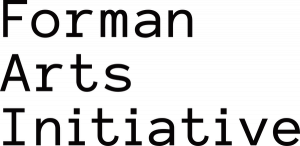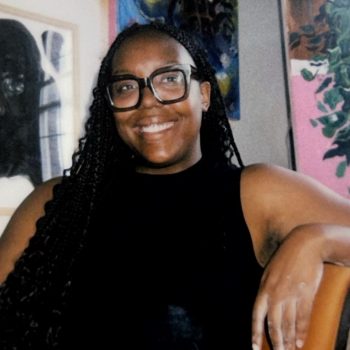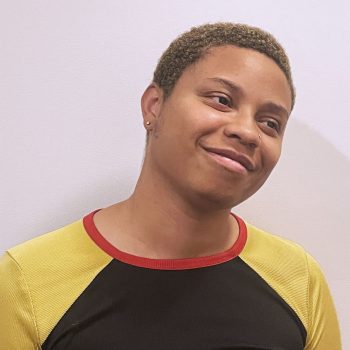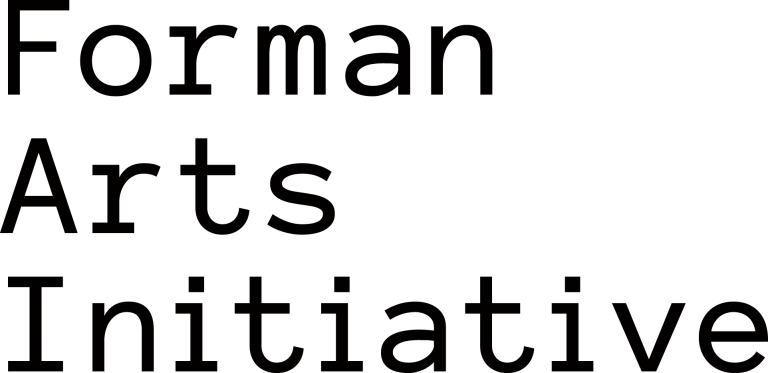
As an artist and as a human, Patricia Renee’ Thomas endeavors to observe the world around her and equally accept both the joys and sorrows of being alive. Her inclination to explore this duality stems from, in part, experiencing emotional turbulence throughout her adolescence. Thomas grew up in Darby, Lansdowne and Drexel Hill. She remembers her time in Delaware County during the Obama-era in particular. It was a time she experienced incessant racism, even as the country was quick to deem itself “post-racial.”
Painting and drawing became avenues to celebrate Black people, especially Black women, while still confronting the prejudices that many have when viewing Black bodies. Thomas explains, “The work has manifested into a self-portrait, my love for painting and color, and that everything has color. I want this conversation on the depictions of Blackness to come back.”
A graduate of University of Pennsylvania and Tyler School of Art, Thomas now lives in the city — and her bold portraits have garnered her accolades across the nation. The paintings that Thomas creates are characterized by both deep hues and vibrant pastels. The subjects of the paintings sit amidst shimmering backgrounds, which often feature flowers and natural environments.
Thomas loves Philadelphia and is quick to give praise to the people, institutions, and family that helped her get to where she is now. As an adjunct professor at University of the Arts and a guest lecturer at Penn, she is “enjoying the slow and steady process of becoming a better instructor.” She hopes to one day build a curriculum that explores how Blackness has been depicted in art and what responsibility artists have for how it will be depicted in the future.
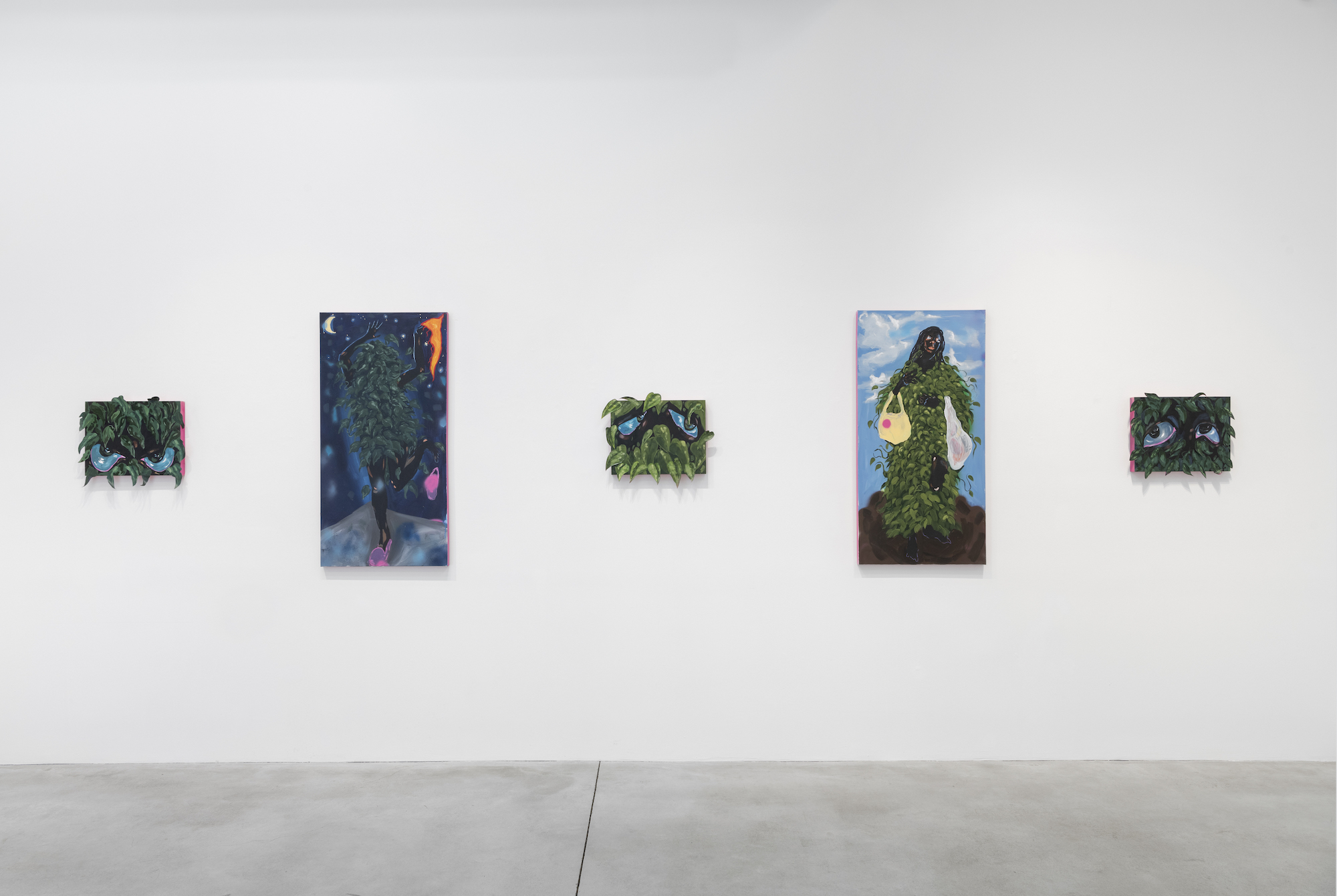
Logan Cryer: Did you always know that you were a painter?
Patricia Renee Thomas: I did always know I was a painter. There was a point when I was in denial and I thought I was more of a drawer. I realized that I get a lot of pleasure from drawing, but I don’t get the type of satisfaction as I do from painting.
LC: Can you describe your time at Tyler School of Art?
PRT: I really lucked out. I can’t believe Tyler is in our city. Tyler was one of the rare spaces that really pushed us to say who we were and to talk about what we were feeling. Our professors were great. We had some really important painters like Odili Donald Odita and Susan Moore, who recently passed away, and Keith Morrison, who’s an iconic Caribbean painter. These are the people who were mentoring the work out of us, and I think we made great stuff.
My mentors gave me real life advice that I straight up took, which was that my practice just needs to be self-sustaining. My professor, Matt Sepielli, said, “If you have to flip burgers so that you can paint, flip those burgers. That is not your job. Your job is a painter. Flipping burgers sustains your career as a painter.” So in my head, when I left Tyler, I knew I was a painter no matter what. I was a barista at that point and I was getting really serious about my barista career. I was competing on a local level.
LC: Wait, you were what?
PRT: Yeah, I was going to pour competitions! It’s actually a pretty niche thing, but people in the community take it pretty seriously. But at the end of the day, when someone asked me who I am and what I do, “I’m a painter.” The goal is that my painting process doesn’t cost me.
So when I would make a group of paintings, I would list how much my paints cost. Sometimes I would find something on the side of the road and I’d write, “Found an easel today.” At that point, I was making these little prints that only cost like a dollar to print. They were sold for $25. If I could sell four of them for every painting I made, that meant I could keep my practice. The only goal is to sustain my practice and for it to be free, which included having to use my mother’s kitchen as a studio. She didn’t like that for very long, so I had to go.
I sought out residencies. Did one or two of those. So now I have a studio for four months and I can make a big painting. Big paintings go to big places. You can’t keep that big painting. You can’t travel that around, so you’ll do anything to show that big painting. At that point, I wasn’t relying completely on Instagram either. I didn’t think posting it on Instagram was satisfying. I didn’t feel like people could see the texture. You can’t see how big things are. A lot of this early work was deeply traumatic. I was talking about things that I was going through at the time or felt strongly about. So, reactions or conversations were a huge part of the practice. It could not end and begin at the studio, and it absolutely couldn’t begin an end on an algorithm.
So, I would apply to a show through an open call and would move on from there, all under the guise that that’s just how my practice works. A lot of it was sheer ignorance. A lot of it was just me running with no goal in mind, just the goal being to make another painting.
LC: How have the lessons you’ve learned become part of your teaching practice now?
PRT: In a couple of institutions, I’ll teach Painting 101 and Drawing 101, Introduction to Materials, things like that, and there’s a huge question regarding what you’re actually teaching. Are you teaching how to produce an image? To have a goal and produce that goal? Or are we putting more emphasis on what the image could mean?
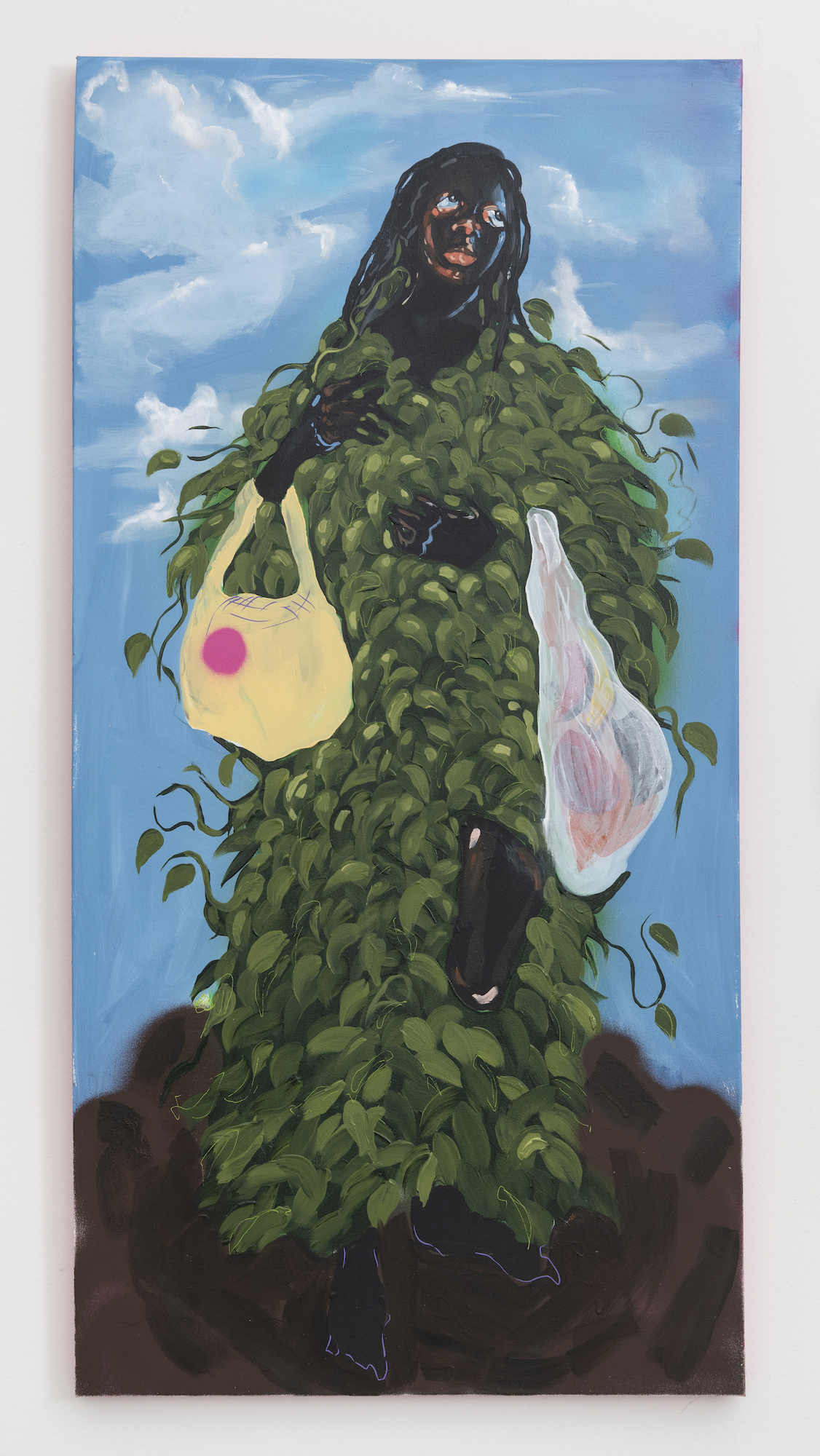
I put a lot of emphasis on what the image could mean. Even if it’s just a picture of a dog, I’m really trying to pull every emotion and every intention out of that student, to remind them that this practice comes from more than just commercial beauty. There’s this interesting balance you have to find in our current job market. Are we assisting artists in building a commercial artist practice where money matters and getting paid matters? Or are we assisting artists in a practice where it’s emotionally and spiritually fulfilling?
That’s really hard for someone who’s innately anti-institution and hates capitalism. I hate that money matters at all. It’s really hard to find that balance. I want my students to be commercially successful because I want them to be able to live as artists, because they have the right to do that. I don’t want to set them up for living a life where their practice is financially detrimental or cannot go on. That’s one of my biggest dilemmas as a teacher right now. I care about the intention of the work, but I also care about their life. So, it’s hard. I’m really just emulating the best of my mentors’ advice and just giving it to my students, plus what I’ve learned along the way.
LC: In terms of your paintings, what are the particular lineages of Black portraiture that you pull from as an artist?
PRT: My early investigations of Black figures were from a neutral point of view. I would draw and paint what I would see from this observational, very atelier style understanding of skin and body, which is kind of representative of my pre-woke experience. The word “woke” is this taboo, scary word now and it’s been re-contextualized. The beginning of the vernacular of it referred to the experience of realizing that you’re Black and the systemic implications of what your skin means.
One day you’re a kid, and the next day you genuinely understand that the assumptions about you are outside of your control. Then everything makes sense. It claps in. You’re like, That’s why my neighbor was so mean to me when I was four. That’s why I wasn’t invited to this. That’s why Latasha Harlins was killed in L.A. There’s just so much that just collapses on you.
I think the Obama era is really important. I’m talking about a very specific niche of five, six years of existing in a society who genuinely believes it’s post-racial. Every experience in which you have that is specifically microaggressive or outwardly racist is scrutinized as the “race card.” These are things that are actually, tangibly affecting my psyche. My mental health was really bad. How can I exist in a society that hates me?

At no point did I look at my Black skin or my large lips or any part of my features that are particularly Afrocentric, never did I ever hate them or wish I was anything else. But I was aware of its relationship to the history of Blackness and I wanted to expand upon them. I did see the Kerry James Marshall retrospective at the Met Museum of Art. At that point I have been obsessed with Kerry James Marshall because he also was investigating this type of Blackness.
I want to be very clear that my paintings started from anger and not beauty yet. It did get to expand and it did get to grow there but it didn’t start with this beautification process. When the paintings are too beautiful, I feel like I’ve lost it a little bit. I’m like, Oh, no. I still want you to think about this particular history. Because as soon as we forget, as soon as we clean it up too much, we get Obama era again, where everyone’s pretending like the histories of everything don’t matter.
I feel like I have that responsibility and then I have a responsibility to myself to paint what I want, which is usually myself or my sisters. They’re my muses, for sure. Which is sometimes why many of my paintings just look like me, but just a little different. We look like each other, us four. We grew up in this very specific suburban, outrageously microaggressive environment where we were gaslit by everyone, and everything reinforced this idea that we were lying about our experiences of racism. It was detrimental for our mental health, all four of us. A lot of this work is healing. A lot of this work is saying, What I experienced did happen and it still happens. Everything I’m saying is true.
It can be beautiful and catastrophic at the same time. It could be the saddest image, but the prettiest image at the same time. It could be optimistic of a future and pessimistic of our reality at the same time. I think that’s where I am with the work. I think I can try to do those two things or balance those things. That’s what I’m trying to do.
This story is part of a partnership between The Philadelphia Citizen and Forman Arts Initiative to highlight creatives in every neighborhood in Philadelphia. It will run on both The Citizen and FAI’s websites.
